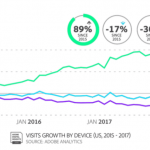AT&T completes its nationwide LTE-M network ahead of schedule
AT&T completes its nationwide LTE-M network ahead of schedule

Your IoT devices may soon have a new network to connect to in order to transmit data directly to the cloud. AT&T has completed its nationwide rollout of its LTE-M Internet of Things (IoT) network.
This rollout, which involved a software update to AT&T’s existing LTE network, enables IoT devices to connect from more places, and with better reliability than before.
See also: How to feed and care for your wireless sensor networks
The LTE-M IoT network incorporates globally standardized 3GPP technology that makes use of licensed spectrum that affords carrier-grade security and reliability.
The network is designed for large-scale rollouts, and plans are set to bring the network to nearby regions including Mexico and Canada.
LTE-M Vs. LTE
There are some significant differences between the LTE network your smartphone uses and the one your IoT device(s) connect to.
For one, the price AT&T is charging per connection is significantly smaller. Current pricing plans show a $ 1.50 annual charge per month per device. Additional discounts and bulk pricing plans will be available.
LTE-M also does a better job at holding a strong signal through barriers such as walls and floors. It boasts a greater range and longer battery life for connected devices. This improved connectivity comes at the cost of bandwidth.
LTE-M supports bandwidth of up to 384 kbps or 1 Mbps, depending on whether it is used in full-duplex or half-duplex mode. That’s quite a bit less than your smartphone, but IoT devices themselves don’t consume a lot of bandwidth at all. Generally, they are transmitting data to the cloud and receiving simple commands. Both of which are accomplished with very little bandwidth overhead.
What are the advantages?
In the world of IoT, size matters. The smaller the modules, the more versatile their uses can be. LTE-M enables manufacturers to work with modules that are 1/6 the size of the ones currently being used to connect to wireless networks.
Battery life is better on LTE-M. LTE-M devices can enjoy a battery life of up to ten years.
Connectivity is maintained through dense buildings and even underground. Maintaining a constant connection is imperative for many IoT applications. LTE-M especially useful for devices that travel in areas where maintaining a connection is an issue.
“Our nationwide LTE-M deployment is another example of AT&T’s continued investment and leadership in IoT,” said Chris Penrose, President, IoT Solutions, AT&T. “We can now reach new places and connect new things at a price that’s more affordable than ever before. Our LTE-M starter kit will also spur developers to open the doors to IoT innovation.”
The post AT&T completes its nationwide LTE-M network ahead of schedule appeared first on ReadWrite.
(26)














